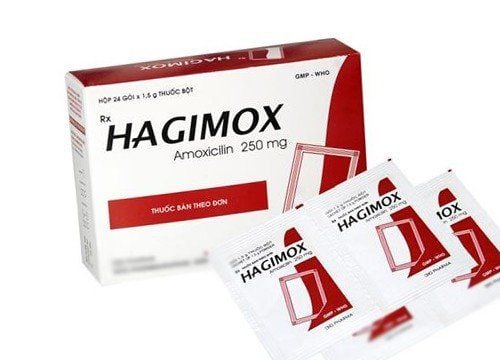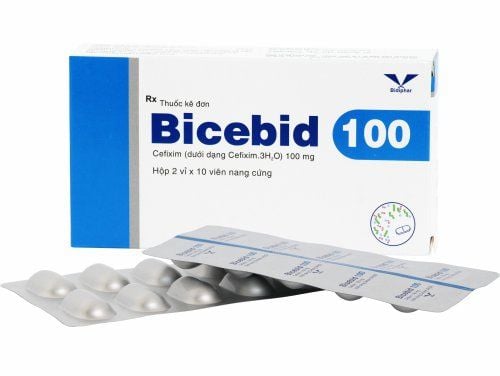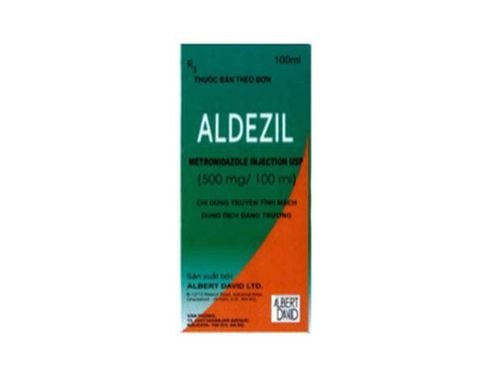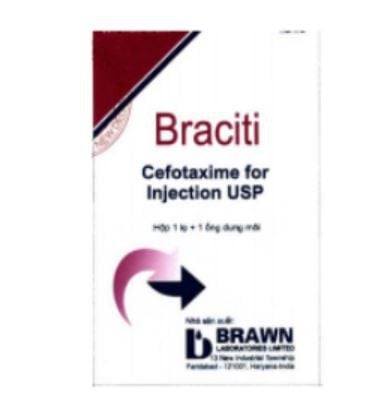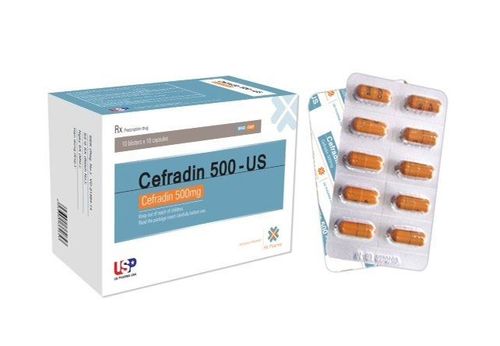This is an automatically translated article.
Septax 1g is a medicine to treat infections in the lower respiratory tract, abdomen, skin, urinary tract, bones, joints and central nervous system... However, Septax 1g can cause some side effects. unwanted side effects, so before using the drug, the patient needs to carefully study the information and follow the doctor's instructions.
1. What is Septax 1g?
Septax 1g belongs to the group of anti-parasitic, anti-infective, anti-viral and fungal drugs. The drug is prepared in the form of powder for solution for injection/intravenous infusion, packing specification: Box of 1 vial.
Ingredients in the drug Septax 1g:
Ceftazidim is prepared in the form of a sterile mixture of Ceftazidim pentahydrate and sodium carbonate with a content of 2g; Other excipients have sufficient drug content.
2. Indications to use Septax 1g
Septax 1g is indicated in the treatment of the following conditions:
Lower respiratory tract infections; Skin and skin structure infections; Urinary tract infections with or without complications. Bone and joint infections; Gynecological infections; Abdominal infections; Central nervous system infections.
3. Dosage, how to use Septax 1g
The usual dose of Septax in adults is 1g every 8 hours or 2g every 12 hours, by deep intramuscular or intravenous infusion. No dose adjustment of Septax is required in patients with impaired liver function.
The recommended dose of Septax in patients with renal failure is as follows:
Creatinine clearance 50-31ml/min dose 1 gram every 12 hours; Creatinine clearance 30-16ml/min dose 1g every 24 hours; Creatinine clearance 15-6ml/min 500mg dose every 24 hours; Creatinine clearance < 5 ml/min 500 mg dose every 48 hours. Septax pediatric dose as prescribed by your doctor or recommended below:
Newborns (0-4 weeks): Septax dose 30mg/kg IV every 12 hours Children from 1 month to 12 years: Dose Septax 30-50mg/kg IV up to 6g/day every 8 hours Septax dose for the elderly:
The usual dose should not exceed 3g/day, especially in patients over 70 years of age. How to take Septax:
Septax is given by intravenous infusion or deep intramuscular injection: Usually, Septax is injected into the upper quadrant of the buttocks or the lateral part of the thigh; Instructions for mixing Septax solution for infusion: Solution for intramuscular injection: Dissolve Ceftazidime 1g in 3ml of distilled water for injection or 0.5% or 1% lilocaine hydrochloride solution. Intravenous solution: Dilute Ceftazidime 1g in 10ml of distilled water for injection or 5% dextrose solution or 0.9% sodium chloride solution. Solution for infusion: Mix Ceftazidime in solutions as in intravenous injection but with a concentration of 10-20mg/ml. The above dose of Septax is for reference only. The specific dose of Septax will depend on your condition and disease progression. To get the right dose of Septax, patients need to consult their doctor/pharmacist.
4. Side effects of Septax
During the use of Septax 1g, patients may experience some of the following side effects:
Swelling at the injection site of Septax; Hypersensitivity; Itching, rash on the skin; Diarrhea ; Nausea/vomiting; Stomachache . During the course of treatment, if there are any abnormal symptoms suspected of using Septax, the patient should notify the doctor or pharmacist for timely treatment.
5. Notes when using Septax
Septax should be used with caution in the following cases:
History of hypersensitivity to active ingredients Ceftazidime, Cephalosporin and Penicillin; There is cross-reactivity between Cephalosporin and Penicillin; Pseudomembranous colitis may occur with the use of Septax; For patients with renal impairment, the total daily dose of Septax should be reduced; High concentrations of Septax can cause convulsions, encephalopathy, loss of balance and neuromuscular excitability; Treatment with Septax may decrease prothrombin activity in people with renal/liver failure or malnutrition; Septax should be used with caution in patients with a history of gastrointestinal disease such as dysentery; The active ingredient Cephalosporin in Septax is considered safe during pregnancy. However, Septax should still be used during pregnancy when absolutely necessary; Ceftazidime is excreted in human milk, so the use of Septax should be considered in nursing mothers; To avoid unwanted interactions when using Septax, patients should inform their doctor/pharmacist of all medications they are taking. Above is the important information about the drug Septax 1g, patients should carefully read the instructions for use and use according to the dose prescribed by the doctor to achieve the best effect.
Please dial HOTLINE for more information or register for an appointment HERE. Download MyVinmec app to make appointments faster and to manage your bookings easily.




